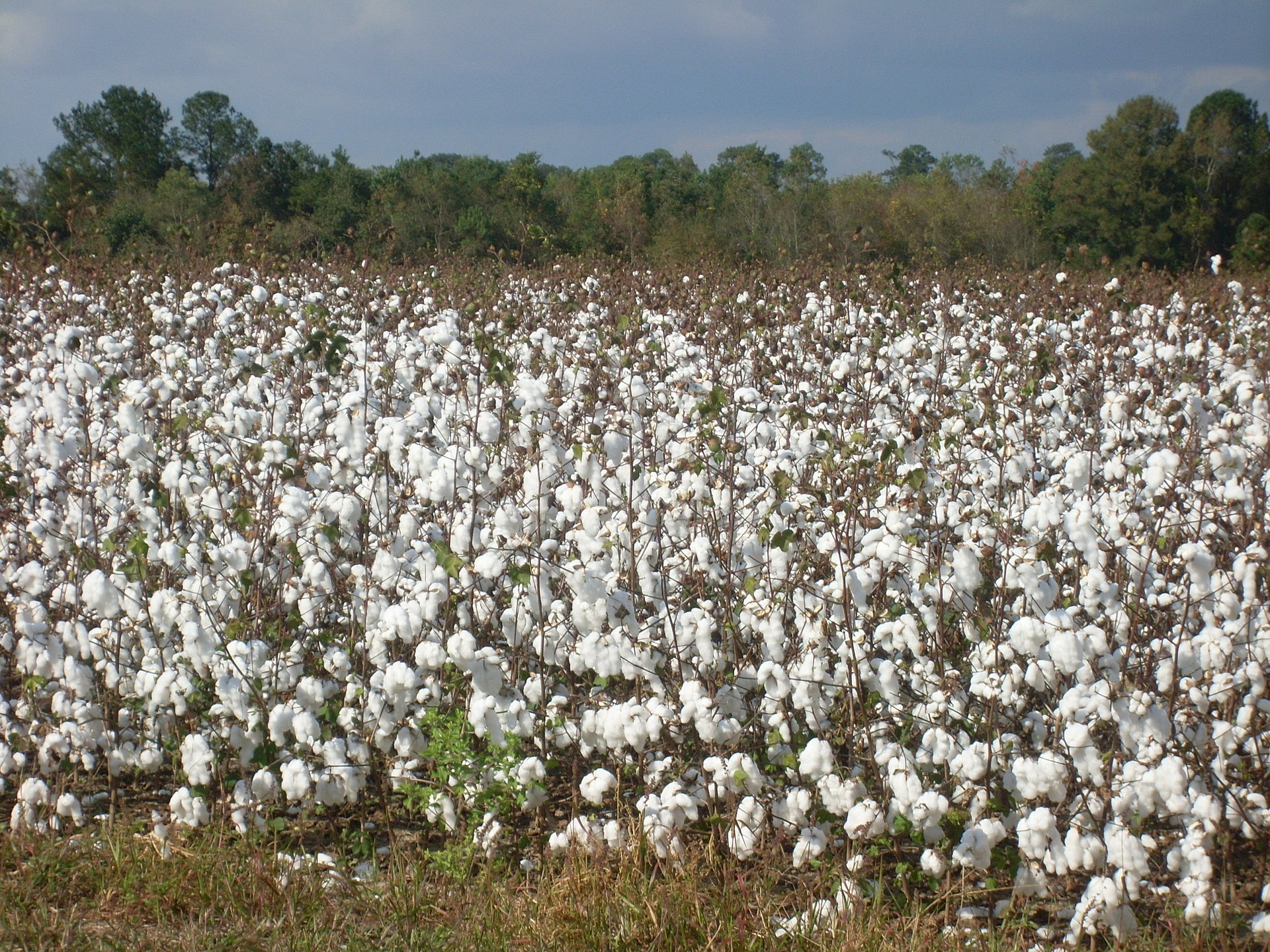An article by Elias Altenberg (ESC long term volunteer 2024-2025, IDC).
Fast fashion is a branch of the clothing industry that aims to produce as many clothes as possible as quickly as possible while remaining fashionable. The principle is to prioritize quantity over quality. This means that many clothes made at very low prices are sold at low prices. However, the negative effects of fast fashion cannot be ignored and have become a major problem.

Cotton cultivation destroys the soil
In today’s industry, raw materials undergo numerous transformation processes to ultimately produce clothing. One of the materials used is cotton. It has been cultivated by humans for a very long time. The earliest evidence of its cultivation dates back to 6000 BC. However, experts believe that cotton was cultivated by humans much earlier.
In modern agriculture, cotton cultivation is practiced in monocultures. This means that cotton is grown in fields year-round, with no other plants growing in the same field. To meet the demands of fast-fashion companies, cotton is therefore grown on very large fields, approximately 30 million hectares worldwide. As a result, all biodiversity on these vast areas disappears. Entire ecosystems are destroyed, providing little or no living space.

The problem with pesticides
Some insect species have still managed to survive in the fields. They attack the plants and feed on their flowers. In addition, weeds and possibly other plants find a way to spread throughout the cotton fields. To get rid of insects and weeds, farmers spray pesticides throughout the fields. The problem is that the toxic substances from the pesticides very easily end up in the drinking water of the surrounding population (via rivers, etc.). And the water table is not spared. Since water follows a cycle, it may be partially poisoned, thus threatening humans and the environment elsewhere. Water and soil are therefore contaminated, and not only in the growing area.
A lot of water for a T-shirt
Another problem with fast fashion arises during clothing production. After being harvested, the cotton is transformed into clothing in factories through various processes. These processes require up to 2,500 liters of water. And that’s just for a single T-shirt. It’s impossible to use salt water in such a process. Therefore, a large amount of drinking water is used, which the local residents are deprived of.
Exploitation by fashion companies
Most fast-fashion groups have become industry giants. Their factories are usually located near cotton plantations, primarily in developing countries (India, Bangladesh, Pakistan, etc.). Since many people live in poverty and unemployment in these regions, it’s easy for large corporations to find cheap labor there. In the factories, people work for wages that aren’t even close to the minimum wage. Often, the work involves chemicals and is carried out without adequate protective measures. Furthermore, working hours are generally very inhumane. Research conducted by “Public Eye” reveals that some workers work 14 hours or more per day and only get one day off per month. Brands like Zara, New Yorker, Shein, Temu, H&M, etc., therefore decisively exploit the local population and enrich themselves at their expense.
Islands, deserts and mountains of waste
After production, customers can purchase the finished garments in stores and online. However, the quality suffers due to the speed of production and processing. As a result, people buy the clothes, wear them, and wash them.
However, due to the poor quality, the clothes quickly tear during washing. Most of the time, the destroyed garments are simply thrown away as they no longer serve any purpose. The fast fashion industry thus encourages a throwaway culture in society and passively contributes to environmental pollution and the accumulation of waste.
Many problems – What now?
In conclusion, we can say that the fast fashion industry contributes to significant problems and damage. People would therefore be better off focusing on second-hand products, recycling, and upcycling. This would even save money, as these products are more profitable in the long run.
Links:
- https://www.ullapopken.de/magazin/materialien/alles-was-du-ueber-baumwolle-wissen-musst/?srsltid=AfmBOoqBraknI2IdS-hU8heiIPy8zfT1qo8C1MZpZo6rsBfEso_a07YL
- https://www.instagram.com/reel/C_xBVD3gP57/?igsh=MXY3Y2JrcDg4b282
- https://www.kritischerkonsum.de/textilien/baumwollanbau#:~:text=Pro%20Saison%20wird%20Baumwolle%20durchschnittlich,sind%20in%20den%20Anbaugebieten%20verseucht.
- https://www.publiceye.ch/de/themen/mode/gespraeche-mit-fabrikangestellten-widerlegen-sheins-verbesserungsversprechen
- https://greenpeace.at/assets/uploads/publications/presse/Fact%20Sheet_Waschtest%20Plastikfasern.pdf
- https://de.m.wikipedia.org/wiki/Polyester







